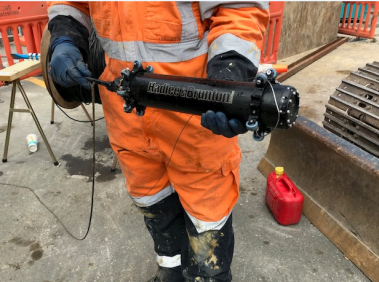Published 24/02/2020
Sludge pipe failure points under Mt Albert identified
An innovative collaboration between Wellington Water and its contractor panel has pinpointed the failure points in two sludge pipes in a 1.8km tunnel deep beneath Mt Albert in Island Bay.
The concrete-encased pipes carry slurry, a wastewater treatment process by-product from the treatment plant at Moa Point, to the Southern Landfill. They normally operate individually with the other one used as back-up.
In an event that Wellington Water’s Chief Wastewater Advisor Steve Hutchison described as highly unusual, both pipes failed on 17 January this year. With the pipes out of action, the slurry would have been diverted to Cook Strait. Instead, Wellington Water and its contracting team have organised a continuous chain of trucks to carry it from Moa Point around the south coast to the landfill on a 24 hour roster.
The next steps are to identify the exact location of the failure points on the pipe. Given that the pipes are in a wastewater tunnel, the safest way to carry out this is by using CCTV, which involves putting a camera inside the pipe to find the fault.
Dave Neru of Hydrotech said the length of the pipes posed a challenge to conventional pipeline CCTV technology.
“The section of the sludge pipes we needed to test and survey are 1.8km long and the traditional camera cable technology was too heavy for that length. We looked at options overseas but in the end it was quicker and easier to tap into local expertise from Hadlee and Brunton and develop a new camera and cable type.”
On February 16, in what is believed to be the longest live-feed with fibre technology in New Zealand, the pipes were mapped and surveyed in the 1.8 km tunnel and fail points were identified at 230m and 165m from the excavation point in Island Bay.
Wellington Water’s customer planning engineer Sean de Roo said it was a satisfying result for everyone involved. “The quality of data we got by taking this approach really firms up our repair options.”

The new CCTV camera developed for the sludge pipes under Mt Albert
